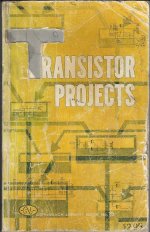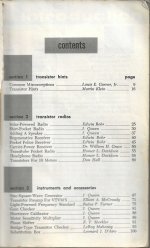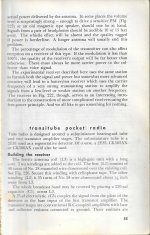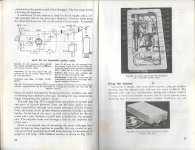Tin whiskers would develop an actual short circuit. Running current through them would sometimes safely remove them. Other times it wouldn’t. If one tests short, just put a flashlight battery directly across the junction, reverse bias of course. Then try again.
That problem has come back in recent years - where air-cavity packages were often needed for very high frequency circuits, and tin-based die attaches used. It’s not just tin - many commonly used elements will do it with varying levels of severity. Even silver, which is used to make epoxy conductive. But tin was by far the worst offender.
All-glass packages aren’t that good thermally. The heat path in a glass diode is through the LEADS. That’s why one-watt zeners have such thick leads. I imagine it’s the same for those transistors. Yeah, there is radiation too but it’s a tiny fraction with “plates” that small.
That problem has come back in recent years - where air-cavity packages were often needed for very high frequency circuits, and tin-based die attaches used. It’s not just tin - many commonly used elements will do it with varying levels of severity. Even silver, which is used to make epoxy conductive. But tin was by far the worst offender.
All-glass packages aren’t that good thermally. The heat path in a glass diode is through the LEADS. That’s why one-watt zeners have such thick leads. I imagine it’s the same for those transistors. Yeah, there is radiation too but it’s a tiny fraction with “plates” that small.
So it wouldn't surprise me if Germanium in a JFET was possible. (?)even some opamps are SiGe these days
SiGe is not germanium as you know it. It acts more like GaAs, but processes like silicon.
Ge JFETs are probably possible but the leakage currents would be high enough that you might as well be using a bipolar.
Ge JFETs are probably possible but the leakage currents would be high enough that you might as well be using a bipolar.
I bet there never was a Germanium JFET, Right?
It appears that germanium fets have been made in laboratory or other research applications, but none are ready for prime time today. If they ever appear they will not be 100% germanium. Lots of today's semiconductors use multiple semiconducting metals in their construction. SiGe is just one example.So it wouldn't surprise me if Germanium in a JFET was possible. (?)
Most of the research has been focused on mosfet technology in order to get around the lower performance of a p-channel device in today's silicon CMOS devices. Germanium has a higher electron mobility so these is effort to use Ge for the p channel and Si for the n channel on the same Si substrate. Today most GaN and some of the GaAs stuff is built on a Si or SiC substrate for better thermal conductivity.
This research paper which reads like a PHD thesis outlines some of the issues:
https://www.ncbi.nlm.nih.gov/pmc/articles/PMC5453288/
Here's a Wiki. page on the use of Sapphire in semiconductors.
(a resistance to radiation is interesting)
https://en.wikipedia.org/wiki/Silicon_on_sapphire
(a resistance to radiation is interesting)
https://en.wikipedia.org/wiki/Silicon_on_sapphire
As mentioned, HP used SOS for microprocessors. Many of these processors wound up in test equipment. For undisclosed reasons HP pulled the plug on the SOS stuff rather abruptly back in the 80's I think. Several pieces of popular test equipment wound up being orphaned for lack of spare CPU chips. The same piece of test equipment got reissued as a "B" version with a conventional CPU chip but the CPU board is not compatible with the "A" version equipment. The HP8903A audio analyzer is one of these. Fortunately, mine still works well, but it will become useless when the CPU dies as no replacements are available. The HP3585A spectrum analyzer is another example and plenty of these machines have been parted out due to faulty CPU's, including the one I had.
Peregrine Semiconductor has been making high spec RF switches in a SOS "Ultra CMOS" process for about 30 years. The sales engineer carried an uncut 8 inch wafer around to sales calls because it has a unique property, you can see through it. We (Motorola) used these switched in the latest APX-8000 multi band public safety walkie talkie. The synthetic "sapphire" material has a very good thermal conductivity while being a good insulator and RF dielectric material. These are necessary properties for RF power amplifiers and switches.
Peregrine Semiconductor has been making high spec RF switches in a SOS "Ultra CMOS" process for about 30 years. The sales engineer carried an uncut 8 inch wafer around to sales calls because it has a unique property, you can see through it. We (Motorola) used these switched in the latest APX-8000 multi band public safety walkie talkie. The synthetic "sapphire" material has a very good thermal conductivity while being a good insulator and RF dielectric material. These are necessary properties for RF power amplifiers and switches.
Apparently, the future is diamond semiconductors...
https://onlinelibrary.wiley.com/doi/10.1002/pssa.202100622
https://onlinelibrary.wiley.com/doi/10.1002/pssa.202100622
This was my introduction to electronics at about age 13:
Making a Transistor Radio: Ladybird books
I still feel a flush of nostalgia when I see this. I still have a couple of OC71s in my parts box.
Alex
Making a Transistor Radio: Ladybird books
I still feel a flush of nostalgia when I see this. I still have a couple of OC71s in my parts box.
Alex
Around the same age a friend of mine lent me a National Schools Radio Television lessons' book by J A Rozenkranz from 1937, in Spanish, which was probably something very rare. I got hooked right away with electronics. I tracked down copies on the Internet, and it is incredible how well they explained everything.
Was into electricity 5-6 yrs old w/ batteries and light bulbs, then tearing apart old radio/tv chassis & learning about different components (& tubes)
Actually started building stuff from book below- probly 12ish yrs old. Of particular interest this forum was the transistor/ tube hybrid project.
Interesting the 2E31 is listed as a 'hearing aid' tube.
Jim
Actually started building stuff from book below- probly 12ish yrs old. Of particular interest this forum was the transistor/ tube hybrid project.
Interesting the 2E31 is listed as a 'hearing aid' tube.
Jim
Attachments
IIRC, straight Ge semiconductors exhibit thermal runaway. Hence, GaAs, GaN, etc.
Si does not exhibit thermal runaway.
Si does not exhibit thermal runaway.
- Home
- Amplifiers
- Tubes / Valves
- A device that does many things a vacuum tube does



